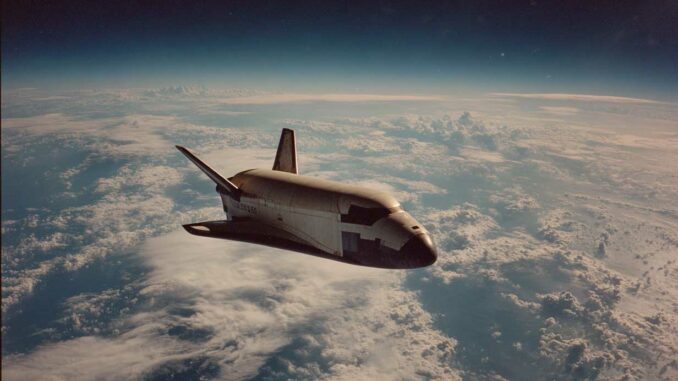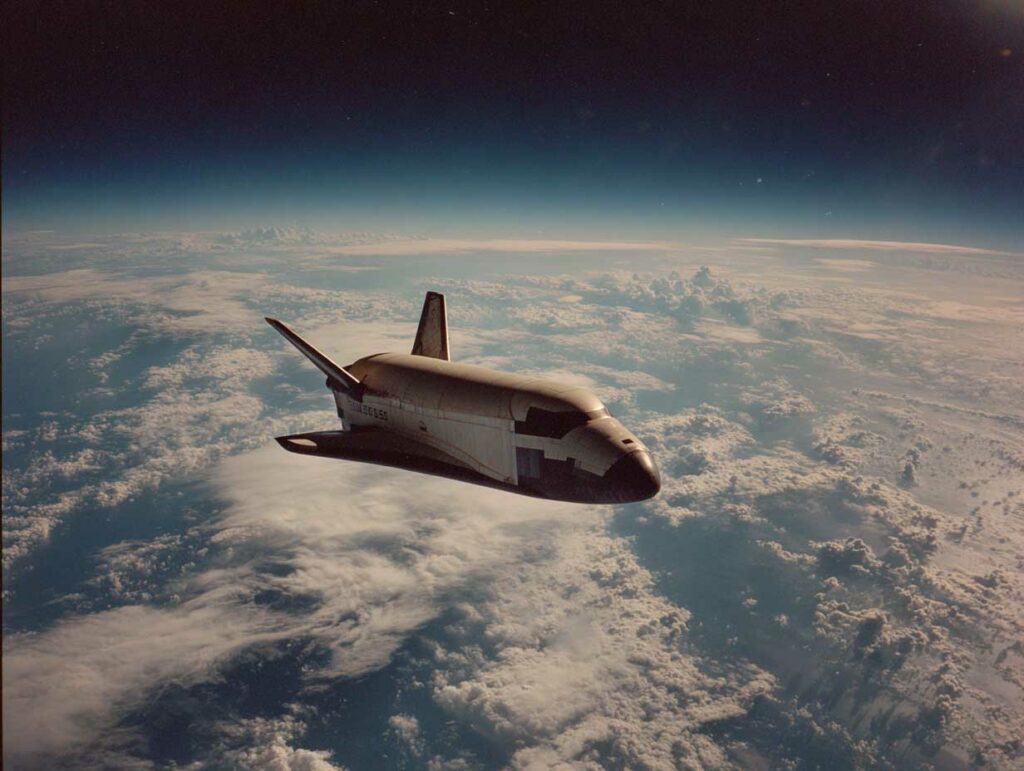
Boeing’s X-37B is embarking on its eighth mission, with laser and quantum inertial systems to test, and an integrated service module for further experimentation.
The X-37B Orbital Test Vehicle, a reusable space glider developed by Boeing, has completed its eighth flight, launched on August 21, 2025 from Kennedy Space Center (LC-39A) aboard a SpaceX Falcon 9 (mission USSF-36/OTV-8). It carries an integrated service module, increasing its capacity to carry multiple experiments. Payloads include a high-speed inter-satellite laser communication demonstration and the most sophisticated quantum inertial sensor ever tested in orbit, enabling effective navigation when GPS is unavailable. Its maiden flight recalls its previous 434-day mission, during which it performed an unprecedented aerobraking maneuver to change its orbit without consuming fuel.
The context and legacy of the platform
The X-37B is an unmanned space plane developed by Boeing on behalf of the U.S. Space Force, in conjunction with the Air Force Rapid Capabilities Office. This orbital vehicle is unique in that it is reusable: launched into low orbit by a conventional rocket, it is capable of returning to Earth by landing horizontally like an airplane. Since its first flight in 2010, only two units have been in service, but they have accumulated more than 4,200 days in orbit, demonstrating the reliability and durability of the platform.
The X-37B’s missions have gradually lengthened over time. While the first flights barely exceeded 270 days, the fifth flight (OTV-5) marked a significant extension. The sixth flight (OTV-6) introduced a service module, providing additional capacity to carry a variety of experimental payloads. Finally, the OTV-7 mission reached a milestone with 434 days spent in elliptical orbit, paving the way for advanced experiments, particularly on material resistance, prolonged exposure to cosmic radiation, and space environment monitoring.

Technical specifications of the eighth mission (OTV-8)
The eighth mission of the X-37B introduces several innovations that reinforce its role as a reusable space laboratory. The most notable is the addition of an integrated service module, attached to the rear of the aircraft. This additional structure significantly increases the payload capacity. It allows heavier and larger payloads to be installed, paving the way for more diverse experimentation campaigns. This development is part of a process of adaptation, as previous missions had already shown the limitations of the standard glider configuration.
The mission also includes a demonstration of inter-satellite laser communication. This technology aims to replace or supplement conventional radio links. It promises much higher data rates, reduced latency and increased security against interception attempts. In practice, such communication allows several satellites in low orbit, at an altitude of around 1,900 kilometers, to be connected directly, creating genuine space networks capable of transmitting large volumes of data. For the armed forces, this represents a major advance in the coordination of space assets and in the resilience of communications in contested environments.
Another key part of the mission is to test a quantum inertial sensor, considered the most advanced ever sent into space. This instrument uses the properties of atoms cooled to temperatures close to absolute zero to measure acceleration and rotation with unprecedented accuracy. Unlike conventional systems, it does not rely on GPS, which guarantees reliable navigation even in the event of jamming or signal loss. For military and civilian operations, such technology provides insurance against the vulnerability of current satellite systems.
Finally, this mission continues the work carried out during OTV-7, which experimented with aerobraking. This technique, which involves skimming the upper layers of the atmosphere to change an orbit without using large amounts of fuel, has proven its effectiveness. Its reuse in the long term would give the X-37B increased maneuverability, making the platform more flexible and better suited to complex scenarios in orbit.
Strategic uses and operational benefits
One of the major contributions of the X-37B is its ability to accelerate the technological maturity of space systems. Thanks to its reusable design and modularity, the aircraft can perform multiple tests in orbit without requiring the complete development of dedicated satellites. This approach significantly reduces the time between the design of a technology and its validation in real conditions. Where a conventional satellite requires several years of preparation and a substantial budget, the X-37B can integrate experimental payloads, test them, and then return to Earth for inspection and improvement. In a context of increased competition with China and Russia, which are investing heavily in their own orbital infrastructure, this ability to iterate quickly is a strategic advantage.
The OTV-8 mission also illustrates the importance of strategic resilience. The introduction of a quantum inertial sensor enhances the continuity of space and military operations, even in highly contested environments. Global positioning systems (GPS, GLONASS, BeiDou) are vulnerable to jamming or cyber attacks. A quantum sensor, which is autonomous and immune to interference, guarantees the navigation of satellites and space platforms in all circumstances. For the United States, which relies heavily on GPS for its military and civilian operations, having a credible alternative is a matter of national security.
Finally, the X-37B serves as a proof of concept for scalable space architectures. The combination of high-speed laser communications and autonomous inertial systems paves the way for distributed networks of satellites capable of interconnecting securely and flexibly. These constellations could be adapted to defense needs, but also find civilian applications, such as improving global telecommunications or environmental monitoring. The platform thus becomes a test bed for future hybrid, modular, and resilient space networks, where each satellite acts as a node in a global system.
Challenges and frank reflections
It would be illusory to believe that the X-37B reveals all its secrets: the program remains classified, and the USSF often conceals its objectives. That said, putting real quantum and laser technologies into orbit is a tour de force. It proves that the military is investing to stay ahead, even discreetly.
The recent allocation of approximately $1 billion in funding shows that Washington is prepared to provide long-term support for this experimental approach.
These missions also raise ethical and strategic questions: how far should the discreet militarization of space go? And if other powers follow the X-37B model, how can control or transparency regimes be established?
The OTV-8 flight puts the X-37B program on a path of continuous innovation and operational viability. We are entering an era in which space is becoming a tangible laboratory—and a battleground for technological rivalries.
War Wings Daily is an independant magazine.